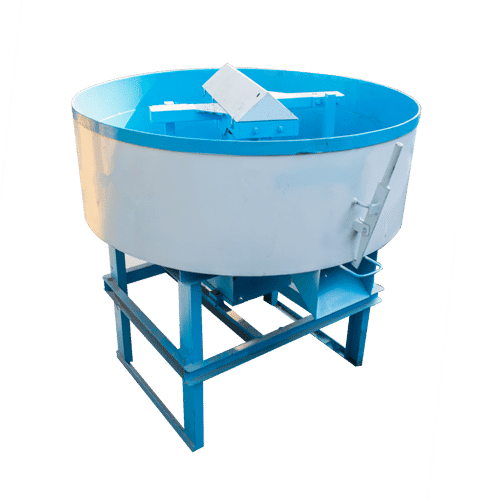Concrete Testing Schmidt Hammer
- High Quality Materials
- Compliance With Standards
- Clear Product Information
- Warranty & Support
- Product Testing & Certification
- Delivery & Policy
- Ask a Question
- Estimated Delivery: 5 Days – 10 Days
- DESCRIPTION
FEATURE | SPECIFICATION | |
Material for Construction | Stainless steel | |
Thickness |
| |
Minimum Order Quantity1 | 1 Piece | |
Brand | Lotus Traders |
Information About Concrete Testing Schmidt Hammer:
What is Concrete Testing Schmidt Hammer?
One non-destructive testing (NDT) tool for determining concrete’s surface hardness is the Schmidt hammer. It goes by the names rebound hammer and Swiss hammer as well. Ernst O. Schmidt, a construction engineer in Zurich, Switzerland, created the hammer in 1954.
When a spring loaded mass strikes the surface of a concrete sample, a Schmidt hammer measures the rebound of the impact. At a specific energy, the test hammer strikes the concrete. The test apparatus measures the concrete’s hardness, which affects the rebound. The rebound value can be used to calculate the compressive strength of the concrete by consulting a conversion chart.
In order to evaluate the quality of the concrete in already existing buildings and pavements, the construction industry frequently uses Schmidt hammers. They are also used to track the curing of concrete and test precast concrete components.
There are two varieties of Schmidt hammers: Type N and Type L. For testing concrete with a compressive strength range of 10 to 70 MPa, type N hammers are utilized. For testing concrete with a compressive strength range of 10 to 40 MPa, type L hammers are utilized.
The concrete surface must be smooth and level and the hammer must be held at a straight angle to it in order to perform a Schmidt hammer test. After that, the hammer is driven up against the concrete until the mass that is loaded with springs is released. Next, the rebound value is noted.
Schmidt hammer tests can be used to test a lot of samples quickly since they are comparatively simple and rapid to do. It is crucial to remember that Schmidt hammer tests only provide an approximation of the compressive strength of concrete. Destructive testing techniques like core testing and cylinder testing must be performed to provide a more precise measurement.
Features of Concrete Testing Schmidt Hammer
Some of the most important features of a Schmidt hammer for concrete testing are as follows:
· Impact energy: There are two varieties of Schmidt hammers: Type N and Type L. Hammers of Type N possess a greater impact energy compared to those of Type L. They are therefore better suited for evaluating higher compressive strength concrete.
· Rebound scale: Schmidt hammers are equipped with a rebound scale that gauges how much the mass loaded with springs bounces back. Usually, the rebound scale has a millimeter graduation.
· Conversion chart: A conversion chart is usually included with Schmidt hammers so that the rebound value can be translated into an approximate compressive strength. The type of Schmidt hammer, the age of the concrete, and the type of concrete are just a few of the variables that determine the conversion table.
· Consistency: Materials like steel or aluminum are often used to make Schmidt hammers. Because of this, they can be used in a range of settings.
· Mobility: Schmidt hammers are reasonably portable and low in weight. This facilitates their transportation to and from test locations.
A few Schmidt hammers additionally come equipped with extra features like:
· Digital display: The rebound value is displayed on some Schmidt hammers digital displays. As a result, recording the outcomes and reading the rebound value are made simpler.
· Data storage: A few Schmidt hammers have the capacity to keep test results. Creating quality control reports or monitoring test results over time might both benefit from this.
· Automatic correction: A characteristic of some Schmidt hammers automatically modifies the rebound value according to the temperature of the concrete and the test angle. This may contribute to increasing the test results accuracy.
All things considered, Schmidt hammers are useful and trustworthy instruments for evaluating the quality of concrete. They are easy to use, portable and reasonably priced.
Benefits of Concrete Testing Schmidt Hammer
Some of the benefits of utilizing a Schmidt hammer for concrete testing include the following
· Non destructive testing Schmidt hammer tests do not cause any harm to the concrete because they are non-destructive. When destructive testing techniques like core testing are impractical, this is crucial for testing concrete in already built structures and pavements.
· Fast and simple to conduct: Schmidt hammer tests can be conducted quite quickly and simply. Testing takes only a few seconds after the hammer has been calibrated. Schmidt hammer testing is therefore perfect for extensive testing initiatives.
· Affordable and portable: Schmidt hammers are comparatively cheap and portable tools. Because of this, a broad spectrum of users—from tiny contractors to major engineering firms—can utilize them.
· Versatile: A range of concrete types and strengths can be tested using Schmidt hammer tests. They can also be used to track the curing process and evaluate how consistent the concrete is.
The following are some particular instances of the use of Schmidt hammer testing:
· To evaluate the concrete’s quality in newly constructed constructions
· To locate deteriorating concrete sections in already existing constructions
· To keep an eye on the concrete’s curing in precast concrete components
· To look into concrete malfunctions
· To assess a pavement’s concretes homogeneity
In many ways, Schmidt hammer testing is a useful method for evaluating the quality of concrete. This test approach is quick, simple, portable, affordable and non-destructive.
Applications of Concrete Testing Schmidt Hammer
The Schmidt hammer is an adaptable instrument with numerous uses, such as:
· Schmidt hammer tests are a useful tool for controlling the quality of new concrete in building projects. This might be assist in guaranteeing that the concrete satisfies the required strength specifications.
· Evaluation of the current concretes condition: Schmidt hammer tests can be used to pinpoint regions of deteriorating concrete in already built/Previously built buildings. One can utilize this information to perform repairs or to create a maintenance schedule.
· Concrete curing monitoring: Schmidt hammer tests are a useful tool for tracking the concrete curing process in precast concrete components. When the concrete is strong enough to be taken out of the molds or put into use, this information can be used to make that determination.
· Examining concrete failures: Concrete failures can be examined using Schmidt Hammer Tests. With the use of this data, the failures root cause and suggested repairs can be identified.
· Evaluation of concrete pavement uniformity: The homogeneity of concrete pavements can be evaluated using Schmidt Hammer tests. The pavements requirement for repairs or replacement can be determined using this information.
Additional uses for the Schmidt hammer are as follows:
· Concrete specimen testing in the lab: Concrete specimens can be tested in the lab using Schmidt hammer tests. This can be applied to validate destructive test results, like those from cylinder testing.
· Research and development: The characteristics of concrete can be studied, and new concrete materials and construction techniques can be developed using the Schmidt Hammer Test.
A useful instrument for many uses in the concrete industry is the Schmidt hammer. It is a quick, simple, portable, economical, noninvasive test method that may be used in many ways to evaluate the quality of concrete.
How the Concrete Testing Schmidt Hammer works?
A tangible examination when a spring-loaded mass strikes the surface of a concrete sample, the Schmidt hammer measures the rebound. A specific energy is applied to the concrete by the test hammer. The test apparatus measures the hardness of the concrete which determines the rebound. The concrete’s compressive strength can be approximated using the rebound value and a conversion chart.
The following describes a Schmidt hammer test procedure in detail:
· The concrete surface should be smooth and level and the Schmidt hammer is held at a right angle to it.
· The Schmidt hammers plunger is driven into the concrete until the mass that is spring loaded is released.
· The Schmidt hammers scale is used to record the rebound value.
· A conversion chart is then used to translate the rebound value into an estimated compressive strength.
Usually, the Schmidt hammer’s maker provides conversion charts. The conversion charts are dependent on several variables, including the kind of concrete, the age of the concrete and the Schmidt hammer type.
It is crucial to remember that compressive strength of concrete is only estimated via Schmidt Hammer tests. Destructive testing techniques like core testing and cylinder testing must be performed to provide a more precise measurement.
The following information can help you run Schmidt hammer tests:
1. Verify that the concretes surface is smooth and level.
2. Hold the Schmidt hammer perpendicular to the concretes surface.
3. When driving the Schmidt hammer’s plunger into the concrete, use a strong, steady blow.
4. As soon as the spring-loaded mass is released, note the rebound value.
5. Take many readings of the concrete surface at various points, then average the data.
In many different contexts, Schmidt Hammer Tests can be an invaluable instrument for evaluating the quality of concrete. To obtain a more precise evaluation of the compressive strength of concrete, it is crucial to be aware of the tests limitations and to combine it with other testing techniques.
Conclusion
The Schmidt hammer is a tool for non-destructive testing of concrete. It is sometimes referred to as a Swiss hammer or rebound hammer. It offers a quick and easy way to calculate the approximate strength of concrete while it is in place. The test is based on the idea that an elastic mass’s rebound is influenced by how hard the surface it contacts is.
For initial evaluations of the concrete strength in constructions including pavements, buildings, and bridges, Schmidt Hammer testing is helpful. It offers a rapid and easy approach to evaluate the quality of concrete without inflicting any harm. It should be highlighted, nevertheless, that these findings are only suggestive and not as reliable as those derived from extensive laboratory testing.
Additionally we must say a number of characteristics (including aggregate presence, moisture content, surface conditions and concrete age) could have an impact on the outcomes of the test. Thus it is very much imperative to adhere to established rules and take these characteristics into account while analyzing the outcomes.















